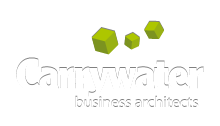Process identification, analysis and streamlining
Challenge
Organisations are frequently aware of their inefficiency but are unable to identify its true causes, which prevents them from taking effective corrective steps.
Carrywater’s solution
The best way to look for the root causes of an organisation’s inefficiency is to identify the business processes within which the inefficiency originates, analyse them and design the necessary improvements.
While looking for the inefficiencies we define and describe processes using the information obtained in the course of meetings, workshops and based on the documentation provided by the company. We prepare maps and descriptions which reflect the “as-is” condition of the existing business processes. We identify the processes using applicable world-class reference models, such as SCOR, ITIL, COBIT, PCF or eTOM.
Once we have defined the processes, we perform a number of analyses:
- Quantitative Analysis, in which we rely on the information created, used and processed in the processes analysed; if the volume of the data allows it, we use the Six Sigma method.
- Qualitative/Logical Analysis, which we perform based on the description of the existing condition, interviews and workshops with process participants, in the course of which we identify process bottlenecks. We focus on the need to identify the root cause of the issues (Root Cause Analysis), which involves using the 5why or Ishikawa methods.
The analytic stage of our work produces a list of the inefficiencies discovered (including their causes), conclusions and recommendations, which is the starting point to design an optimal model of processes.
We design the target process model together with the Customer and it usually takes the form of a process architecture that depicts the hierarchy of the company’s processes and the dependencies between them. Our work is usually concluded by drafting a target model implementation plan.
Business value
The organisation obtains a clear and transparent target model of its processes, which:
- has no bottlenecks,
- has a streamlined organisational structure,
- relies on a proper competence allocation and development
and is consequently effective in supporting the execution of the company’s business objectives.
There are also additional benefits which have their source in the staff’s participation in the professional interactive training we deliver, whose most basic objective is to ensure broad and unified understanding of the causes of the issues identified and convincing their participants about the need to enhance the processes. There is also a secondary objective, which is to build efficient teams and provide a natural opportunity to select the candidates for the roles designed in the future process management system, should one be eventually developed.
Other benefits of working with us include gathering knowledge about the existing model of the organisation’s functioning, as well as making the participants of the processes, which had previously been vague and undefined, aware of the context of their duties and making them see their interdependency with other roles in the organisation.
Deliverables
Depending on the scope agreed, our involvement usually produces the following deliverables:
- Description of the “as-is” architecture of processes
- Description of the “as-is” process workflows (process descriptions and maps)
- Report that provides conclusions and recommendations based on the analysis of the “as-is” condition of the identified processes
- Description of the “to-be” architecture of processes
- Description of the “to-be” process workflows (process descriptions and maps)
- Plan on achieving the “to-be” model by the organisation
